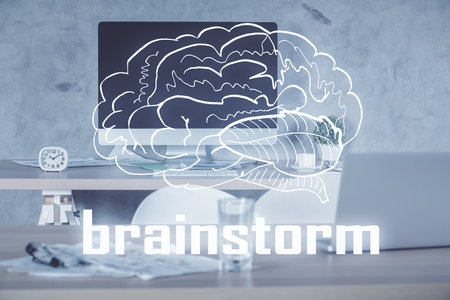1. Introduction to Traumatic Brain Injury and Cognitive Rehabilitation
What is Traumatic Brain Injury (TBI)?
Traumatic Brain Injury, or TBI, happens when a sudden blow or jolt to the head disrupts normal brain function. This can range from a mild concussion to severe injuries that have lasting effects on a person’s life.
Prevalence of TBI in the United States
TBI is a major public health concern in the U.S. According to the Centers for Disease Control and Prevention (CDC), millions of Americans experience TBI each year. Here’s an overview:
| Statistic | Details |
|---|---|
| Annual Cases | Over 2.8 million ER visits, hospitalizations, or deaths related to TBI |
| Common Age Groups Affected | Children (0-4 years), teens (15-19 years), and adults over 65 |
| Main Causes | Falls, motor vehicle crashes, sports injuries, assaults |
Common Causes of TBI in the U.S.
The most frequent causes include:
- Falls: Especially common among older adults and young children.
- Car Accidents: Major source of TBI in teens and adults.
- Sports Injuries: Seen often in youth and professional athletes.
- Assaults: Can affect any age group.
The Impact of TBI on Cognitive Functioning
TBI can lead to various cognitive problems such as trouble with memory, attention, problem-solving, and communication. These challenges can make it hard for people to return to work, school, or daily activities.
The Purpose and Need for Cognitive Rehabilitation
Cognitive rehabilitation is a special type of therapy that helps people recover thinking skills affected by brain injury. In the U.S., evidence-based cognitive rehab programs are designed to support people as they relearn skills needed for independence and quality of life. The goal is to help individuals regain confidence and maximize their abilities after a brain injury.
2. Principles of Evidence-Based Cognitive Rehabilitation
What Does “Evidence-Based” Mean in Cognitive Rehab?
In the U.S., “evidence-based” cognitive rehabilitation for traumatic brain injury (TBI) means using the best available research, combined with clinical expertise and patient preferences, to guide therapy. This approach helps ensure patients receive interventions that are both proven to work and tailored to their unique needs.
The Three Pillars of Evidence-Based Practice
Effective cognitive rehab relies on three main elements, often called the pillars of evidence-based practice:
| Pillar | Description | Examples in Cognitive Rehab |
|---|---|---|
| Best Research Evidence | Using up-to-date scientific studies and clinical trials to choose interventions | Choosing memory strategies shown to help TBI patients in published research |
| Clinical Expertise | The knowledge and skills therapists gain through training and experience | A therapist adjusts techniques based on how a patient responds during sessions |
| Patient Values & Preferences | Considering what matters most to each patient, including their goals, culture, and lifestyle | Selecting activities that are meaningful to the patient, like returning to work or school |
Putting It All Together: A Real-World Example
Imagine a person recovering from a TBI who wants to improve their attention skills so they can drive again. An evidence-based therapist will look at:
- Research: What attention training programs have been proven effective for TBI?
- Expertise: How has this therapist helped other clients with similar goals?
- Patient Values: Is driving important to this person’s independence or job?
The final plan might include computerized attention exercises, hands-on practice, and personalized tips—all chosen by combining these three pillars.
Why Is This Approach Important in the U.S.?
The American healthcare system values treatments that are supported by strong evidence and respect individual choices. Insurance companies and hospitals often require proof that therapies work before covering them. At the same time, people from diverse backgrounds want care that fits their lives and beliefs.
Key Takeaway for Families and Patients
If you or a loved one is seeking cognitive rehabilitation after TBI, ask your therapy team how they use research, experience, and your own goals to shape your recovery plan. That’s the heart of evidence-based care.
![]()
3. Commonly Used Evidence-Based Interventions
Overview of Cognitive Rehabilitation Strategies in the U.S.
Cognitive rehabilitation for traumatic brain injury (TBI) in the United States uses a variety of proven approaches to help individuals regain their cognitive abilities and improve daily functioning. These strategies are tailored to each person’s unique needs, focusing on areas such as attention, memory, and executive function. Below, you’ll find descriptions of some of the most commonly used evidence-based interventions in American rehab settings.
Attention Training
Attention training is one of the core components of cognitive rehabilitation for TBI. This approach targets different types of attention, including sustained, selective, alternating, and divided attention. Therapists use repetitive exercises and real-world tasks to gradually strengthen a patient’s ability to concentrate and filter out distractions. Activities may include computer-based programs, card sorting, or following multi-step instructions. Attention training is often practiced both in clinical settings and at home with family support.
Memory Compensation Techniques
Many people with TBI experience challenges with short-term or working memory. To address this, therapists teach practical compensation techniques that make everyday life easier. These may include:
| Technique | Description | Common Tools |
|---|---|---|
| External Memory Aids | Using tools outside the body to help remember information | Smartphone reminders, planners, sticky notes |
| Errorless Learning | Learning new skills by minimizing mistakes during practice | Guided repetition, prompts from therapists |
| Spaced Retrieval | Practicing recall over increasing intervals of time | Scheduled recall sessions, cue cards |
Executive Function Interventions
TBI often affects executive functions like planning, organizing, problem-solving, and self-monitoring. American rehab professionals use several interventions to help patients rebuild these skills:
- Goal Management Training (GMT): Teaches individuals how to break down tasks into smaller steps and monitor progress toward goals.
- Metacognitive Strategy Instruction: Encourages self-awareness about thinking processes so patients can recognize challenges and apply strategies independently.
- Problem-Solving Therapy: Focuses on teaching structured approaches to everyday problems through identifying issues, generating solutions, weighing pros and cons, and evaluating outcomes.
Cultural Considerations in the U.S.
Cognitive rehabilitation in America is often provided by a multidisciplinary team—such as occupational therapists, speech-language pathologists, neuropsychologists—and emphasizes community reintegration. Family involvement is encouraged to support practice at home and promote independence in daily activities like returning to work or school.
4. Multidisciplinary Team Approach and Patient-Centered Care
The Power of Teamwork in Cognitive Rehabilitation
In the United States, cognitive rehabilitation for traumatic brain injury (TBI) is most effective when a multidisciplinary team works together. This means that experts from different fields come together to provide care that addresses all aspects of a patient’s recovery. The team may include occupational therapists, speech-language pathologists, psychologists, physicians, and sometimes social workers or case managers. Each professional brings their unique expertise to the table, making sure no part of a patient’s needs is overlooked.
Roles of Key Team Members
| Team Member | Main Role in TBI Rehabilitation |
|---|---|
| Occupational Therapist (OT) | Helps patients regain independence in daily activities like dressing, bathing, or cooking. |
| Speech-Language Pathologist (SLP) | Works on communication skills, memory strategies, and swallowing issues. |
| Psychologist | Supports emotional adjustment, addresses mood or behavioral changes, and helps with coping strategies. |
| Physician (Physiatrist or Neurologist) | Oversees medical management, coordinates care plans, and monitors overall health status. |
Patient-Centered and Goal-Oriented Care
The U.S. healthcare system puts a strong focus on individualized care. Every person with TBI is unique—what works for one patient may not work for another. That’s why teams use patient-centered care: they listen to the patient’s story, understand their goals (like returning to work or school), and build a personalized plan together. This approach increases motivation and gives patients an active role in their recovery journey.
How Teams Collaborate with Patients and Families
- Goal Setting: Teams meet with patients and their families to set short- and long-term goals based on what matters most to the patient.
- Regular Meetings: The team regularly reviews progress and makes adjustments as needed.
- Cultural Sensitivity: Providers consider cultural backgrounds and preferences to make sure care feels respectful and relevant.
- Education: Teams educate families about TBI, empowering them to support recovery at home.
An Example of a Collaborative Plan
A young adult recovering from TBI may want to return to college. The OT helps with organizational skills; the SLP works on memory techniques for studying; the psychologist supports stress management; and the physician coordinates medications and therapy schedules. Together, they create a roadmap for success that fits the patient’s life goals.
5. Challenges and Future Directions in TBI Cognitive Rehabilitation
Ongoing Challenges in the U.S.
Cognitive rehabilitation for traumatic brain injury (TBI) faces several unique challenges across the United States. While research has advanced, many people still experience barriers to receiving quality care. Below is an overview of some key issues:
Access to Care
Accessing cognitive rehab services can be tough for many Americans, especially those living in rural or underserved areas. Insurance coverage may be limited, and specialized providers are not always available nearby. Transportation and financial constraints also add extra hurdles.
Cultural Considerations
The U.S. is a diverse country, and TBI rehabilitation must reflect this diversity. Language barriers, cultural beliefs about disability, and lack of culturally sensitive resources can affect how well patients engage with treatment. Providers need training in cultural competence to offer personalized care that respects each individual’s background.
Summary of Key Challenges
| Challenge | Description |
|---|---|
| Geographic Barriers | Lack of rehab centers in rural areas; long travel distances |
| Insurance Coverage | Not all plans cover cognitive rehab; high out-of-pocket costs |
| Cultural Sensitivity | Lack of bilingual or culturally aware providers/resources |
| Awareness & Education | Patients and families may not know about available treatments |
Future Directions Based on Current Research and Policy Developments
Innovative Approaches and Technology
Telehealth is making it easier for people in remote areas to connect with specialists. Mobile apps and virtual reality programs are being developed to supplement traditional therapy. These innovations can bridge some gaps in access and engagement.
Policy Changes and Advocacy Efforts
There is growing advocacy for broader insurance coverage of cognitive rehab services. Some states are updating Medicaid benefits to include more comprehensive brain injury treatment options. National organizations are also pushing for standardized guidelines to ensure consistent care across different regions.
Key Areas for Future Focus:
- Expanding telehealth services: Making online rehab widely available can help reach more patients.
- Cultural competence training: Educating clinicians on cultural differences improves patient trust and outcomes.
- Research on diverse populations: Studying how interventions work for people from various backgrounds ensures that treatments are effective for everyone.
- Policy updates: Advocating for insurance reforms so cognitive rehab is accessible to all who need it.
The future of TBI cognitive rehabilitation in the U.S. depends on addressing these challenges through continued innovation, research, and policy change.


